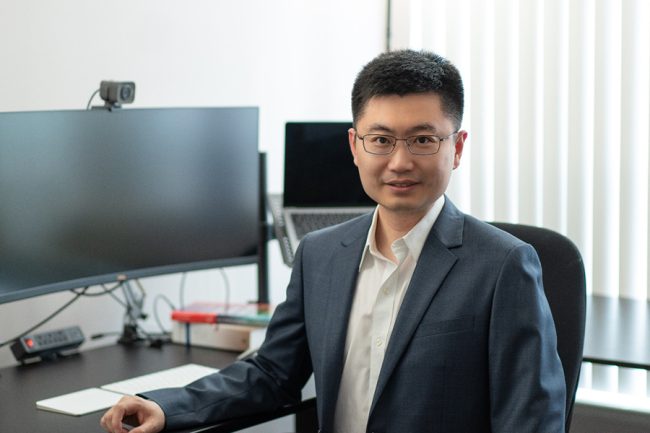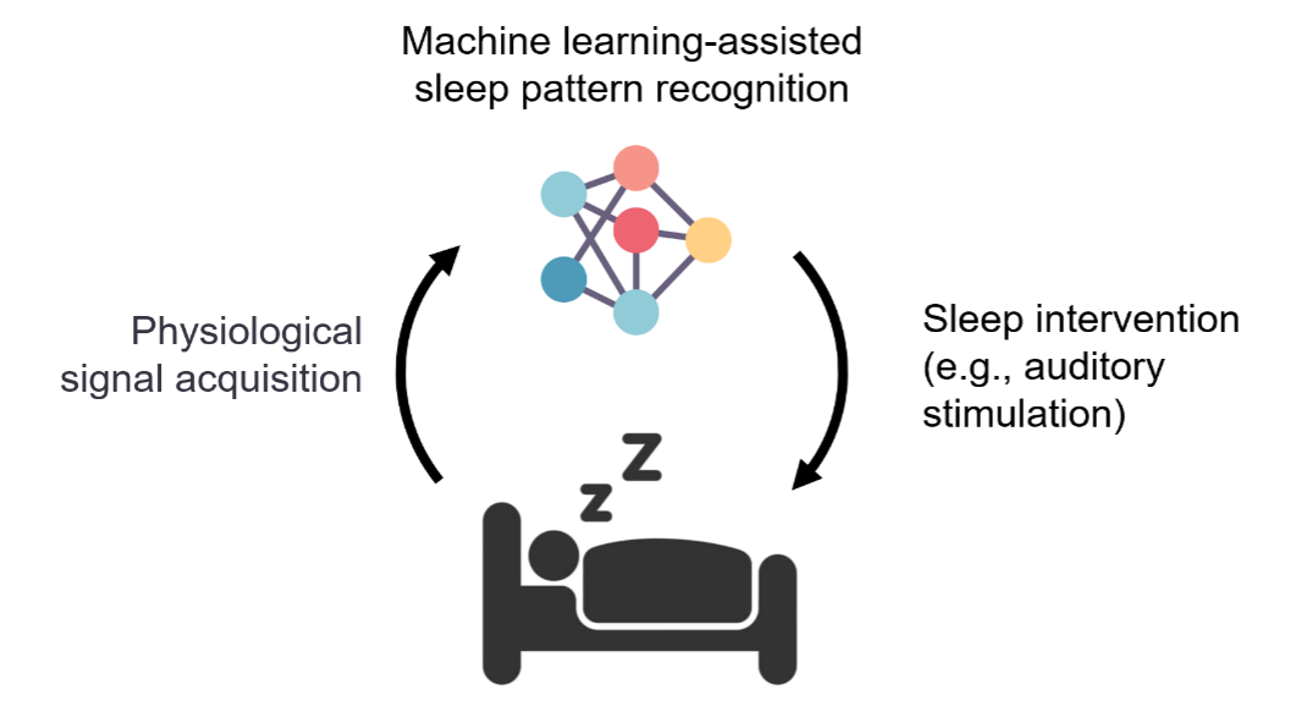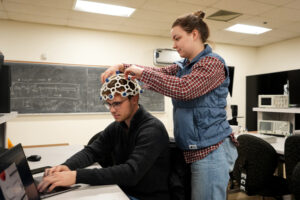
JULY 6, 2023 • By Selah Katona
A new partnership between ECE professor Xilin Liu and University of Pennsylvania Professor Andrew G. Richardson will develop a new generation of electronic devices to investigate sleep modulation — and potentially develop new interventions that help deal with a wide range of sleep disorders.
On average, we spend a third of our life asleep. During sleep, the brain undergoes important processes that support memory consolidation, neural restoration and the clearance of toxins. Sleep disruptions can interfere with these processes. But while good ‘sleep hygiene’ is increasingly recognized as crucial to both physical and mental health, sleep disorders remain widespread.
“40% of Canadians have sleep disorders, with over 3 million suffering from insomnia,” says Liu.
“Sleep deficits negatively affect brain functions such as attention and memory, and immune function, metabolism and heart health. Chronic sleep-wake disruptions are connected to neurodegenerative disorders such as Huntington’s, Parkinson’s and Alzheimer’s disease, and cognitive decline with aging.”
Liu’s research focuses on developing integrated circuits and systems for advancing health care, digital communication and machine learning. In the new collaboration, he will be building fully integrated wireless systems-on-chips that can autonomously modulate sleep behavior in pre-clinical studies.
“Sleep is a complex procedure involving different stages and patterns,” he says. “To address this, we are integrating machine-learning algorithms into our devices. These new algorithms can recognize sleep patterns and identify sleep disorders that may not be distinguishable using traditional algorithms.”
Liu and his collaborators hope that these new approaches will enable them to gain a deeper understanding of how our brains function during sleep and how to modulate sleep circuits.
They also plan to incorporate various neural interfacing capabilities into the system, which will enable more accurate and precise interventions. The results of this research will contribute to the advancement of neuromodulation, a technology that involves placing devices inside a patient’s brain, spinal cord or peripheral nerves. These devices are designed to regulate neural activity and help reduce symptoms related to different disorders.
Liu is a faculty member of the CRANIA Neuromodulation Institute (CNMI) based in U of T Engineering, that brings together experts in engineering and neuroscience in a collaborative hub for neuromodulation research.
“Neuromodulation is an evolving area with much potential, and our department is fortunate to have Professor Liu as one of its champions,” says Professor Deepa Kundur, Chair of ECE. “His inventive and considered research is motivated by care and concern for patients, as he continually looks for ways to significantly improve therapeutic outcomes.”

Liu’s project was recently awarded $2.2 million by the National Institutes of Health (NIH) through their Research Project Grant Program (R01), and is supported by industry partners such as the Canadian Microelectronics Corporation (CMC Microsystems) and Open Ephys. These partners will aid in the dissemination of this project’s research findings to push sleep modulation forward.
The NIH R01 grant is a highly competitive award and Liu and Richardson’s proposal fell in the top 1% of applications.
“This is a great sign that NIH recognizes the value and impact of this research and the caliber of the team,” says Liu. “We’re excited to receive this funding and over the next four years we hope to get to a stage where the technology can be used in clinical trials.”
Liu’s research team has a long-term goal of creating wearable devices for sleep modulation that individuals can use at home to enhance the quality of their sleep.
“While there are medications available to treat sleep disorders, the challenge lies in the fact that we still don’t fully comprehend what actually occurs in our brains during sleep,” says Liu.
“It’s possible that there are low-cost, high-efficacy treatments available for sleep disorders that we are currently unaware of.”
The team hopes that the new collaboration will help them get closer to an answer.
Research reported in this story was supported by the National Institute Of Neurological Disorders And Stroke of the National Institutes of Health under Award Number R01NS129738. The content is solely the responsibility of the authors/researchers and does not necessarily represent the official views of the National Institutes of Health.
Story from U of T Engineering News, with files from Matthew Tierney


